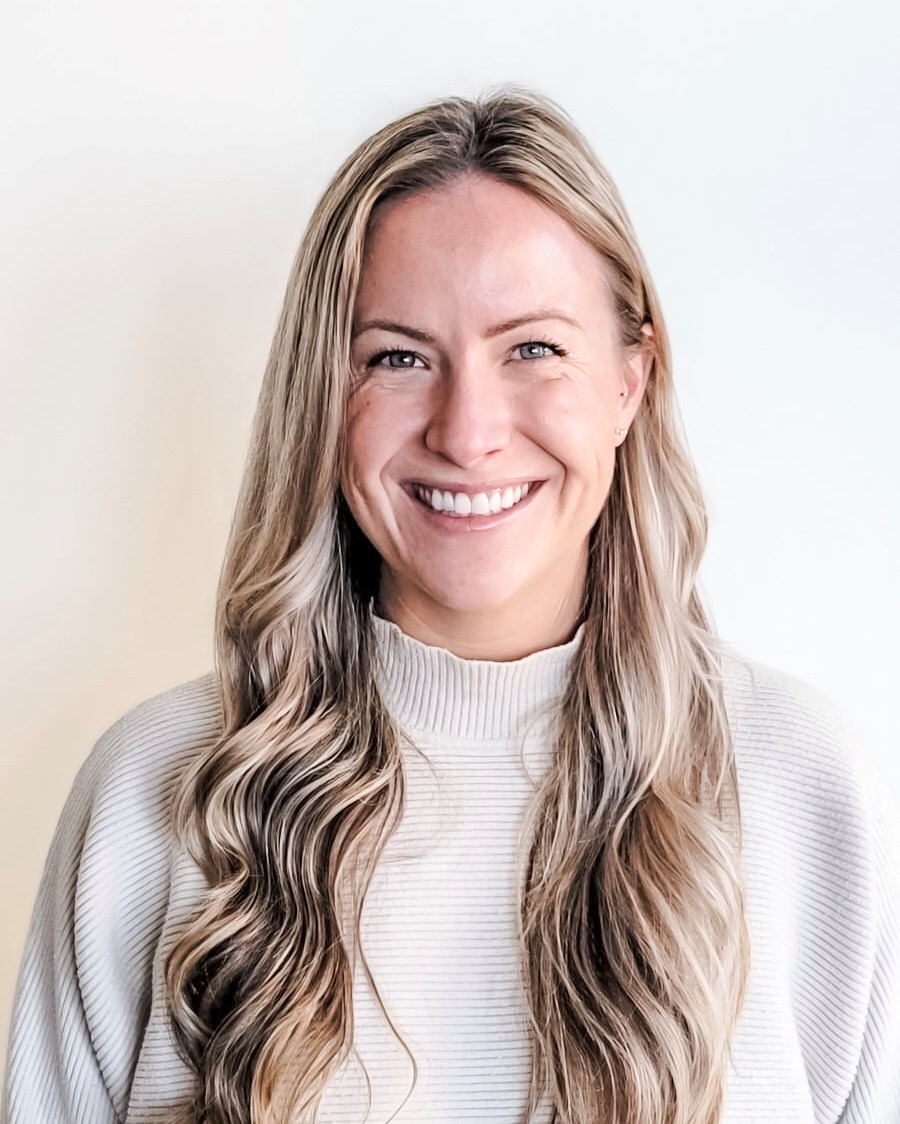 Kathleen is a nurse practitioner in Cardiac Surgery at BC Children's and took the time to answer a few questions about her experience about being trapped in the recent B.C. mudslides.
Kathleen is a nurse practitioner in Cardiac Surgery at BC Children's and took the time to answer a few questions about her experience about being trapped in the recent B.C. mudslides.
Q. Where were you going when the mudslide happened and tell us how the slide unfolded?
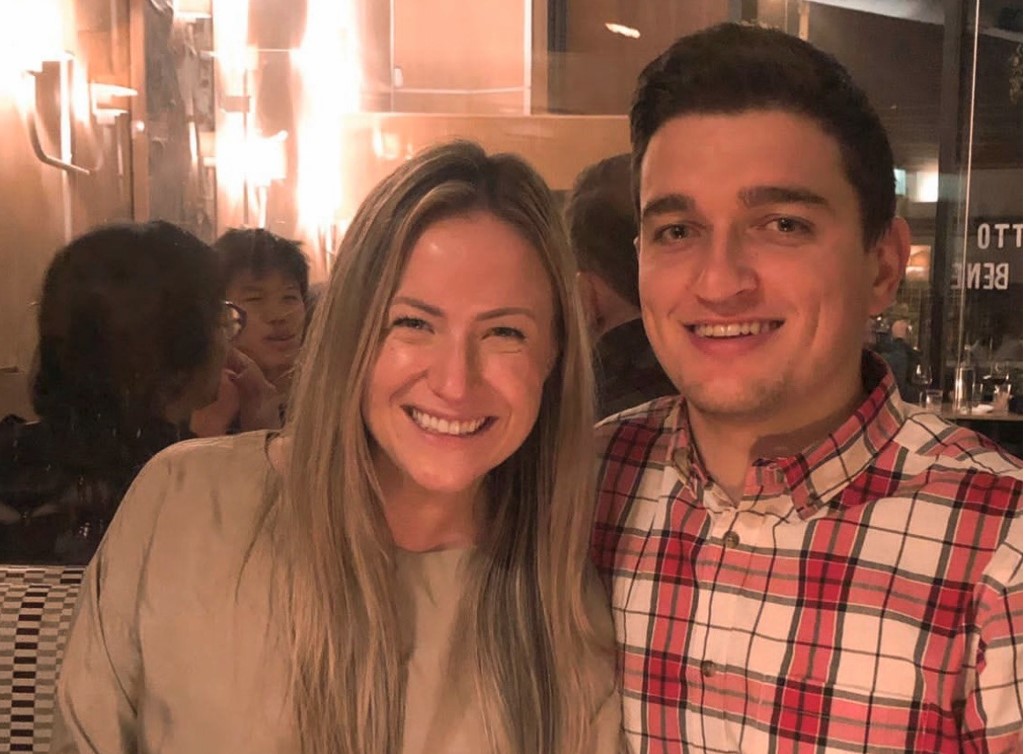 A. I was returning home from a weekend away in Vernon with my boyfriend, Matt DuToit. The roads were awful that night. We left the interior around lunch time and had been rerouted multiple times due to highway closures and accidents. We came to another stop on Highway 7 between Hope and Agassiz around 7:30 p.m. It was dark and raining hard, we couldn't see what was happening up ahead. Cars began indicating for people to turn around.
A. I was returning home from a weekend away in Vernon with my boyfriend, Matt DuToit. The roads were awful that night. We left the interior around lunch time and had been rerouted multiple times due to highway closures and accidents. We came to another stop on Highway 7 between Hope and Agassiz around 7:30 p.m. It was dark and raining hard, we couldn't see what was happening up ahead. Cars began indicating for people to turn around.
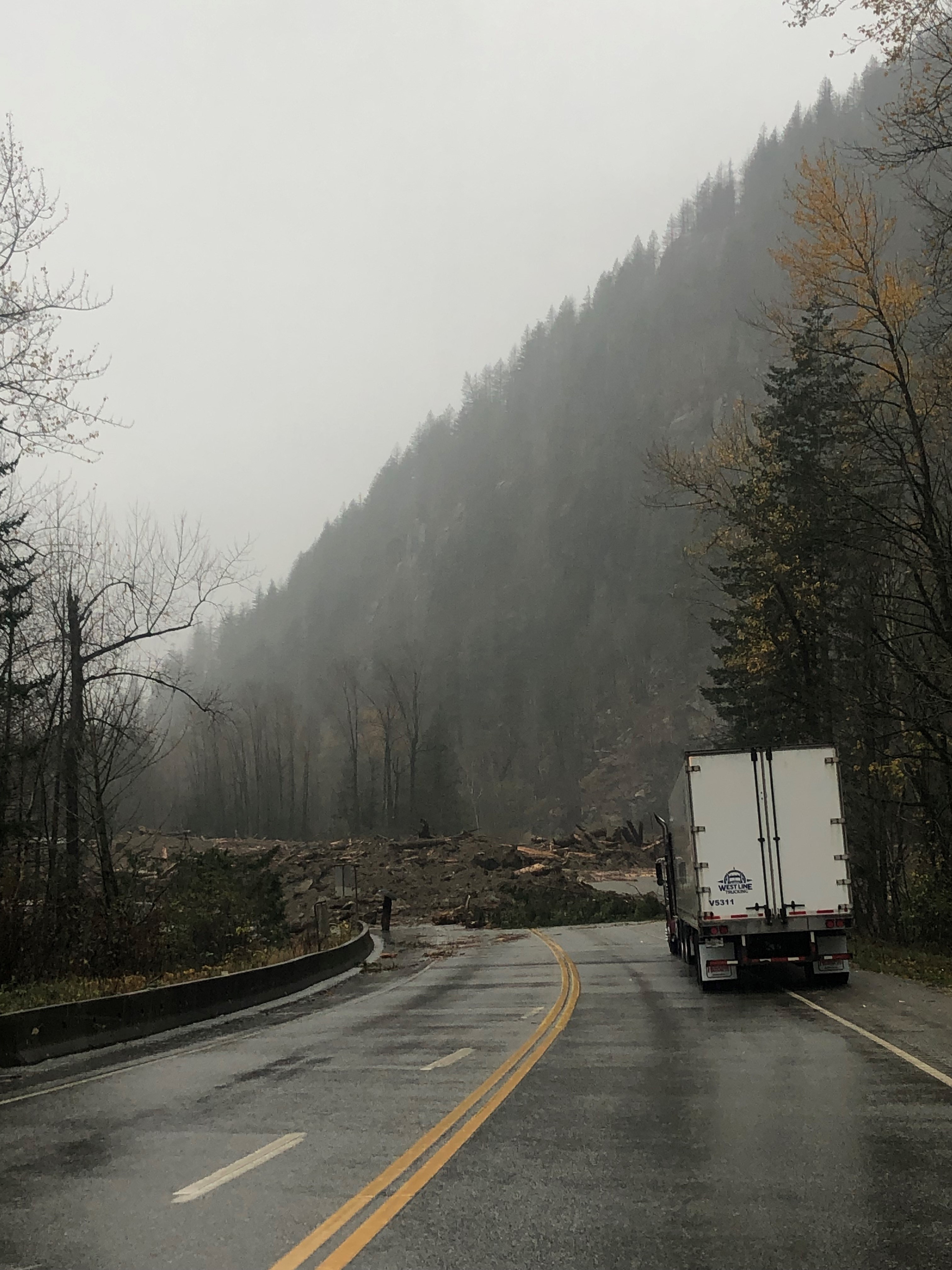 We soon found out a mudslide happened a couple hundred feet in front of us. Shortly after, a mudslide happened directly behind as well, trapping us in for the evening. To one side was a plunging cliff into the Fraser River. The other side of the road had a large rockface.
We soon found out a mudslide happened a couple hundred feet in front of us. Shortly after, a mudslide happened directly behind as well, trapping us in for the evening. To one side was a plunging cliff into the Fraser River. The other side of the road had a large rockface.
Q. When did you realize your skills might be helpful to others around you?
A. I realized my skills might be useful when we found out that multiple cars had been pulled down the embankment by the mudslide. The passengers in the cars that were still accessible from the road had been rescued by civilians. Several cars had been pulled much further down the slide. Those cars were reached by Agassiz fire department on the other side.
Q. Who did you help and what did you do?
A. There was an injured family identified in the approximately 800-metre stretch between the two slides. As soon as we heard that cars had been taken out by the mudslide, my boyfriend and I set off to see if we could help anyone. We quickly found two other nurses. One was waiting near the Agassiz slide, in case anyone else emerged back onto the road and needed help. The other had helped pull a family from their car, up the embankment and safely into strangers' cars for shelter.
Q. How did you come across the injured family and what were your initial thoughts upon finding them?
A. As soon as we found the other two nurses we were quickly directed to the injured family. The one nurse that helped pull the family from their car gave me a quick handover of the suspected injuries. The son was identified as the one that would require help first. A man in a high visibility vest directed us to the truck with him. I hopped in the back seat of the truck that had the boy and his sister in it. Immediately, upon seeing him, I knew he needed to get out from the slides and to a hospital ASAP. One of my initial thoughts was how brave the siblings were, given everything they had just been through.
Q. What did you do to help the injured teen?
A. As soon as I got into the truck, I started assessing his neurological status. Satisfied that he was alert and oriented, I started assessing the rest of his injuries. I suspected he had some type of facial/skull fractures based on the amount of swelling I could see. I kept him upright to reduce swelling and did my best to keep him calm. He was in an extraordinary amount of pain, his main complaint being his eyes. They were both swollen shut at this time. I called the ophthalmologist on call at BC Children's to see what I could do in our current conditions. At that time his eyes were too swollen to examine and all we could do to preserve his vision was prevent him from rubbing his eyes. He had several large lacerations and was bleeding profusely. I gently tried to clean up the lacerations and stop some of the bleeding, while being careful of any potential facial/skull fractures. I continuously assessed his neurological status, worried that it would suddenly change.
As soon as Search and Rescue (SAR) made it across the east slide, the other nurse alerted them that we needed to find a way for the teen to be evacuated and brought to the nearest hospital. After SAR configured a way to get him across the slide, I went to a van that had the remainder of the family. The boy's twin brother had a broken arm. I splinted his arm and placed it in a sling to stabilize it. As we waited for SAR to bring the family across, I assessed the remainder of the family for other injuries, all which were more minor in nature in comparison. Despite their experience and their injuries, the entire family was so calm and appreciative.
Q. What were the other people around you doing to help?
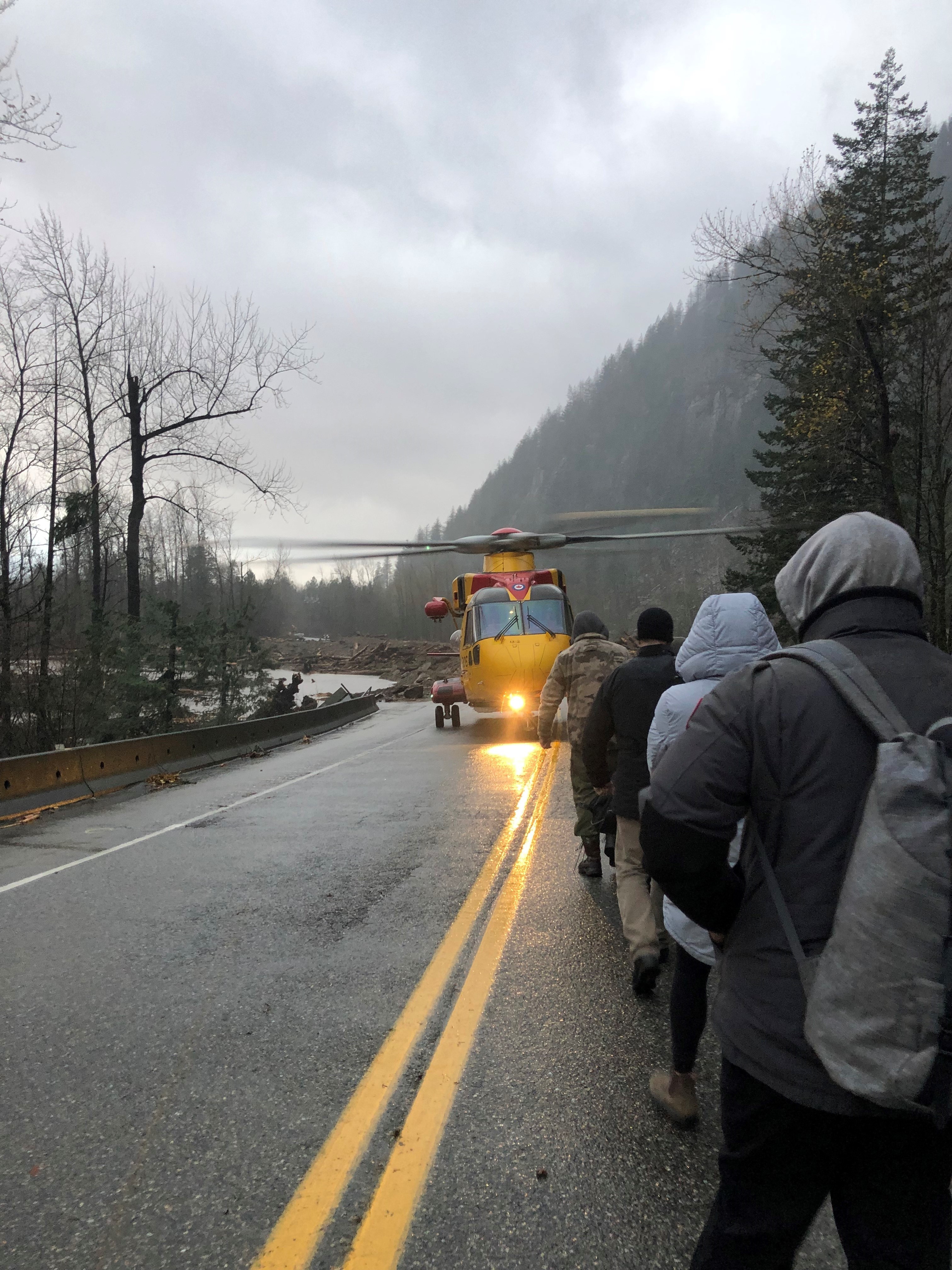 A. The other two nurses were coordinating with the ministry and SAR to help those trapped between the slides. My boyfriend is a consultant engineer in highway design so he assessed the culverts and looked at the topographical maps to see if there were further areas for potential slides. Cars were redirected to the safest spots on the road, as we knew we'd be spending the night there. The following morning a Facebook group was created called "Stuck on 7." It was used to coordinate help, ie. if there was a family that had no food, diapers, etc. There was a Type 1 diabetic without insulin that was hyperglycemic and symptomatic. One of the nurses texted me, asking if I could search for insulin so we went car-to-car looking. That man was the first one to be evacuated out by the Canadian Forces. People were offering food, water and shelter to those that needed it.
A. The other two nurses were coordinating with the ministry and SAR to help those trapped between the slides. My boyfriend is a consultant engineer in highway design so he assessed the culverts and looked at the topographical maps to see if there were further areas for potential slides. Cars were redirected to the safest spots on the road, as we knew we'd be spending the night there. The following morning a Facebook group was created called "Stuck on 7." It was used to coordinate help, ie. if there was a family that had no food, diapers, etc. There was a Type 1 diabetic without insulin that was hyperglycemic and symptomatic. One of the nurses texted me, asking if I could search for insulin so we went car-to-car looking. That man was the first one to be evacuated out by the Canadian Forces. People were offering food, water and shelter to those that needed it.
Q. How did it feel to be part of such a team effort working to care for people hurt in this mudslide?
A. It feels surreal. Even after living the experience, reading about the whole story in the Vancouver Sun was still shocking to me. It always amazes me how quick others are to help in an emergency. You truly see the best side of humanity in circumstances like this.
Q. How does this experience compare to your work at BC Children’s? Did you find your work at the hospital prepped you for this type of emergency?
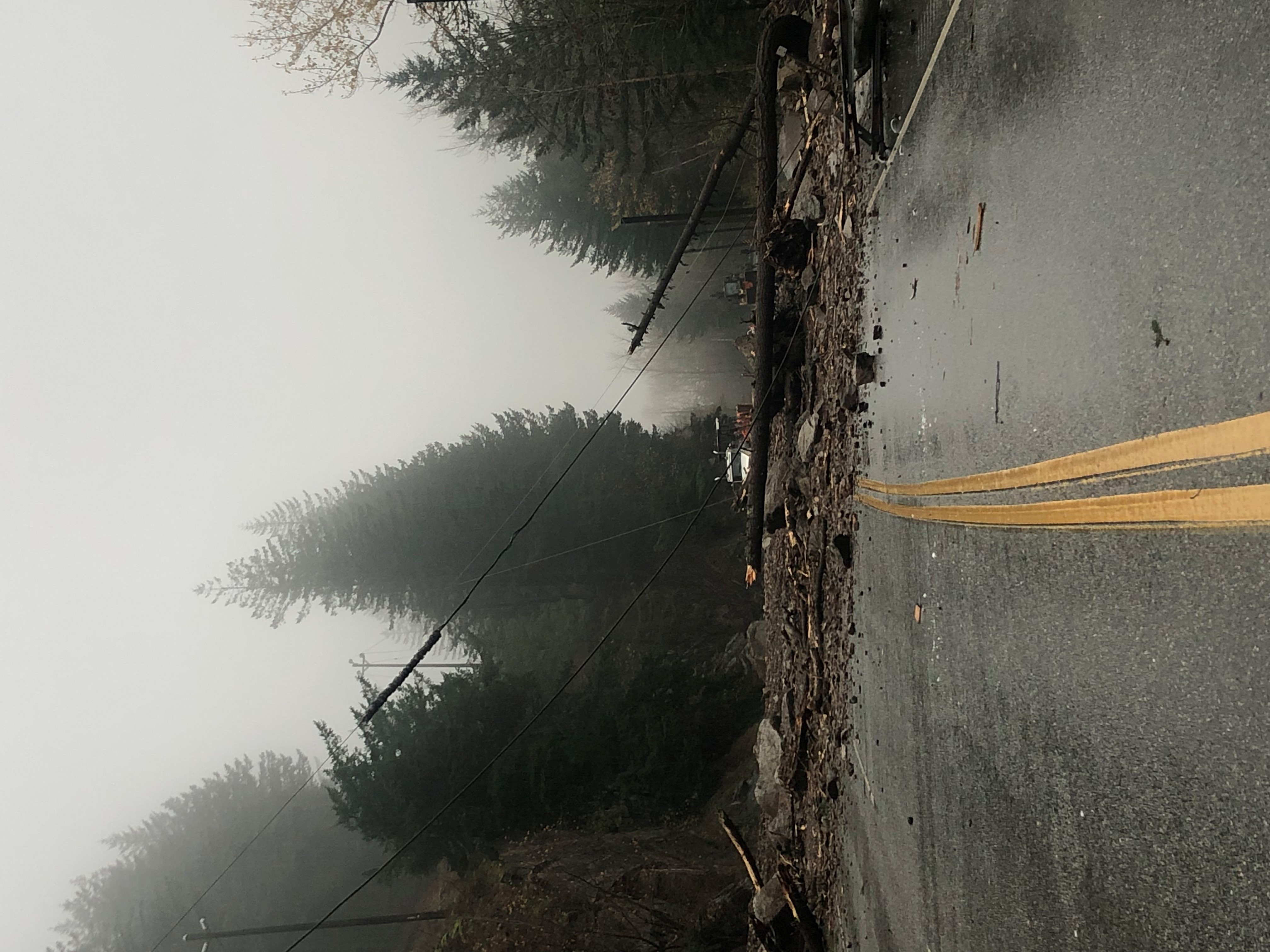 A. Prior to becoming an nurse practitioner, I worked in the Pediatric Intensive Care Unit at BC Children's as a registered nurse for many years. I've cared for many head-trauma/motor-vehicle-accident patients over the years. However, my usual work environment is a tertiary trauma centre, not stuck in between mudslides with nothing more than a well-stocked first aid kit. In the hospital we have ample resources: CT (computerized tomography) scans, a skilled intensive care unit team, medications, surgeons, and procedures to safely care for these patients. I had the skills to assess and help the patient to a degree, but if his neurological status deteriorated and we weren't able to get him out, the outcome would have been very different. Working at BC Children's in high acuity environments helped me stay calm and focused, allowing me to prioritize care. It also allowed me to use a "phone a friend" card (thanks optho on call!)
A. Prior to becoming an nurse practitioner, I worked in the Pediatric Intensive Care Unit at BC Children's as a registered nurse for many years. I've cared for many head-trauma/motor-vehicle-accident patients over the years. However, my usual work environment is a tertiary trauma centre, not stuck in between mudslides with nothing more than a well-stocked first aid kit. In the hospital we have ample resources: CT (computerized tomography) scans, a skilled intensive care unit team, medications, surgeons, and procedures to safely care for these patients. I had the skills to assess and help the patient to a degree, but if his neurological status deteriorated and we weren't able to get him out, the outcome would have been very different. Working at BC Children's in high acuity environments helped me stay calm and focused, allowing me to prioritize care. It also allowed me to use a "phone a friend" card (thanks optho on call!)
Q. Is there anything else you’d like to add?
A. There were an incredible amount of people and effort that helped make the ending to the family's rescue a positive one. I'm so relieved that all five of them are at home and recovering together.
Q. Have you contacted the family since the rescue?
A. Yes, the family called me. They came to BC Children's for a follow up and I went to visit them in the clinic. We chatted about everything and hugged. It was such a relief to see them doing OK. The teen is still recovering, but overall, is doing pretty well. It was really nice to see them. They were a tall family and the father said he didn't remember me being that short! It was amazing to see the follow through and that they were doing so well on the other side of this experience.
